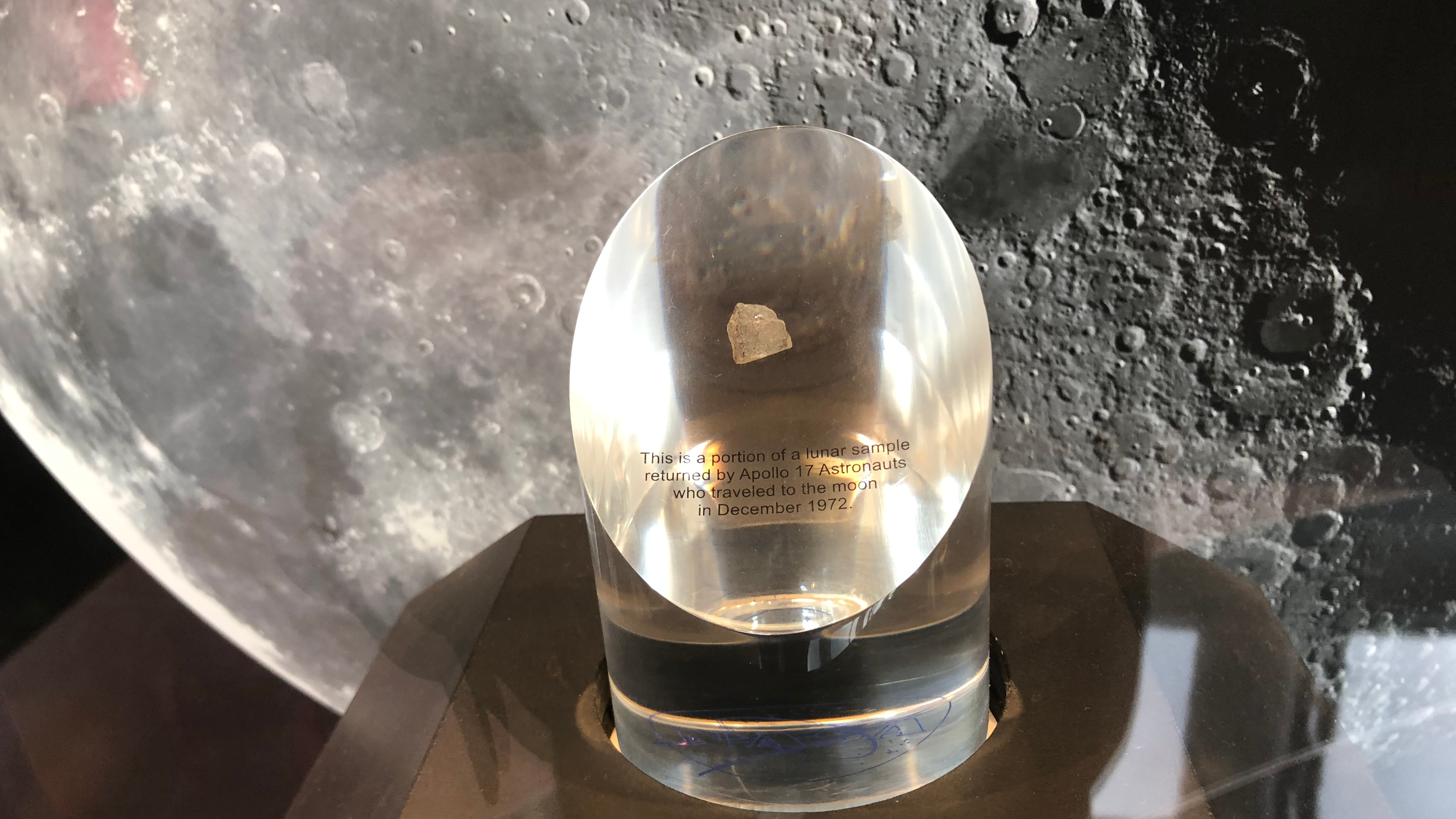
Scientists from China and the U.S. work together to study COVID-19. /CGTN
Scientists from China and the U.S. work together to study COVID-19. /CGTN
At the entrance to the John Glenn College of Public Affairs at Ohio State University is a piece of the moon. It was presented to the University by John Glenn, the first American to orbit the earth and also the oldest person to fly in space.
Researchers at the University have recently uncovered some interesting data.

A piece of the moon, from the 1972 Apollo mission, that had been presented to John Glenn, the first American to orbit the earth, is displayed at the entrance of Ohio State University. /CGTN
A piece of the moon, from the 1972 Apollo mission, that had been presented to John Glenn, the first American to orbit the earth, is displayed at the entrance of Ohio State University. /CGTN
Despite political tensions between the U.S. and China, a new study suggests scientists from the two countries are collaborating more than ever.
Caroline Wagner is an associate professor of the John Glenn College of Public Affairs, Ohio State University.
"We haven't seen a diminishment between researchers from the U.S. and China. In fact, what was interesting in our earliest research is we showed that collaboration between U.S. and China increased in the earliest days. It didn't stop any of the research, I will say that. We didn't see that research that had begun during the initial stages, we didn't see any of it stop because of political intervention."
Wagner's co-authors in the study included Xiaojing Cai, a visiting fellow at Ohio State from Zhejiang University in China, as well as Caroline Fry of the Massachusetts Institute of Technology and Yi Zhang of the University of Technology Sydney in Australia.
One key finding of the study was how China upped its research into the coronavirus after it was first identified in Wuhan in 2019.
"So we began right away, before it was even named yet as COVID-19. The first six and highly impactful articles on the novel coronavirus came straight out of China in the very earliest days. Kind of in contravention to what we hear - that China was not cooperating," says Wagner.
Even before the pandemic, the United States and China were at the forefront of coronavirus research. The study suggests that once COVID-19 was identified, research escalated and was driven by smaller teams of scientists in both countries.
"This international network of connections has risen above national systems of research, but above and beyond that, we have the elites that connect with one another and produce great science, a little bit regardless of who puts the money in. They are looking for that frontier of where is the knowledge base that we need," says Wagner.
The focus now is on a potential COVID-19 vaccine. There are currently some 169 vaccine candidates under development, with 26 of those in the human trial phases.